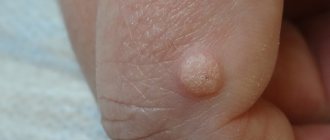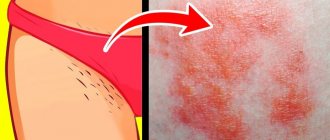Doctors Cost
Price list Doctors clinic
A plantar wart is a nodule or plaque with an uneven surface located in the place where the foot takes the greatest load. Most often, a wart forms on the heel or at the base of the big toe. Treatment of a plantar wart in a child involves removing the altered cells using one method or another.
The causes of a benign formation are usually infection with the papilloma virus. The issue of intervention is decided in each case individually.
Causes of warts on the feet
The human papillomavirus, or HPV, causes plantar warts to grow. Scientists know over 100 types of this virus.
It has different effects on a person. Most types are harmless—in the worst-case scenario, they cause warts to grow.
But there are also dangerous types of HPV. In rare cases, they provoke the development of genital cancer.
The causes of warts on the feet are HPV types 1, 2, 4, 27 and 57. The virus enters through the skin. Usually through small cuts, scratches and other damage.
Under the influence of the virus, skin cells mutate and turn into tumors.
This doesn't happen in one day. The incubation period of HPV can last up to six months, and even then it affects the skin in different ways. Depends on immunity. For some family members, warts will grow quickly after infection, while for others they will never appear.
Fortunately, plantar tumors are not very contagious, but at the same time they remain a threat even without direct contact. The virus survives in warm and humid environments. That is, on the floor next to the pool or in the common locker rooms. So doctors recommend wearing slippers or other shoes in these rooms.
Plantar warts grow especially often in people:
- Childhood and adolescence
- With a weak immune system
- Re-infected with HPV
They also appear due to:
- Wearing tight and uncomfortable shoes
- Using someone else's socks or tights
- Heavy sweating on the feet
External signs of infection are not always the same - several varieties are known.
Warts - what are they?
Neoplasms of a benign nature of viral etiology that develop on the epithelial and mucous membrane are called warts.
Most often they occur in young people or children, but there are exceptions; they can also appear in older people. All warts clinically have the form of a papule, which in turn is an elevated formation on the skin. Under a microscope it resembles broccoli. It grows deep in the layers of the skin and has enhanced nutrition.
There are the following types of warts:
- vulgar or ordinary type,
- flat type, characteristic of adolescence and childhood,
- plantar warts,
- warts of old age,
- and pointed type (condylomas).
The treatment process affects all types differently, that is, some of them can be quickly treated, and some are eliminated by surgery or laser therapy.
What do warts on the foot look like?
Not all growths on the soles are identical. Therefore, sometimes patients confuse warts with other growths and this interferes with effective treatment.
Fortunately, the signs of viral foot warts are easy to remember:
- Small, hard lumps, usually at the base of the toes or on the heel
- Dark spots on the skin are superficial vessels overflowing with blood
- Rough, hardened skin around a noticeable spot that causes the wart to grow deeper into the leg
These formations are also characterized by other symptoms. For example, they cause pain and irritation when walking, which often causes changes in gait. This is how the body fights the unpleasant sensations of warts. Sometimes patients themselves do not notice these changes.
It is recommended to remove such growths.
General information
Warts are hypertrophied areas of the epithelium, usually resulting from infection with papillomavirus.
They are benign formations on the skin or mucous membrane. They appear more often in children and adolescents who have a weak immune system. Warts can be single or multiple, oval or round, lighter or darker than the surrounding tissue. If left untreated, they can increase in size and cause discomfort.
Neoplasms are localized in different parts of the body:
- face;
- fingers, especially around nails;
- articular surfaces (knees, elbows);
- soles.
Sometimes found on the mucous membrane of the larynx and nose. Such warts often degenerate into cancerous tumors, and therefore require immediate medical attention.
Why you need to get rid of warts
Up to 90% of neoplasms on the soles do not affect health and life. A few growths just appeared. And after a couple of months they disappeared. Sometimes people do not have time to visit a doctor, but the warts already disappear, without medications or therapy. And no problems with unpleasant sensations.
Unfortunately, not everyone is so lucky.
The remaining 10% of growths can make life extremely difficult - sometimes they cause severe pain when walking and limit mobility.
How to get rid of warts on the foot?
The first step is to be examined by a dermatologist. The doctor makes the diagnosis easily.
Treatment is prescribed if the formation:
- Constantly growing
- Causes the appearance of other neoplasms
- Hurts badly
- Makes it difficult to walk normally
Typically, patients like to treat warts with medications and avoid surgery.
Ask your dermatologist about topical treatments for plantar growths. There are many such drugs. They gradually destroy tumor cells. But they don't give a 100% guarantee.
Drug methods act on warts very slowly and sometimes take months to remove the growths. What’s even worse is that the tumors may return.
Yes, this does not always happen, but such cases are not uncommon. Therefore, to effectively treat viral warts on the foot, we recommend using one of the surgical methods.
There are many treatment options.
Treatment of plantar warts at home
Pharmacies sell medications whose instructions state that the indication for use is plantar warts. But, removing warts at home is undesirable, because it is often ineffective and can cause complications.
Most drugs that are used at home are strong solutions of alkalis or acids. When using them, a deep, long-healing burn and the development of a rough scar may occur . If exposure is insufficient, warts appear again. In addition, infection of the wound and development of purulent complications is possible.
The treatment method must be chosen by the doctor . And the application of any destructive drugs must also be carried out by a doctor or under his supervision.
How to eliminate warts on the foot and prevent their occurrence
Let's start with an attack on neoplasms.
Doctors remove warts on the foot with the following operations:
- Laser coagulation
The doctor burns out the altered skin cells with a powerful beam of light and at the same time bakes the neighboring vessels. The procedure is bloodless and painless. Sometimes it is impossible to remove all the growth in one session and you need to visit the doctor several times to completely clean the skin. Then the wound on the skin heals for at least a couple of weeks.
- Cryodestruction
The dermatologist freezes the wart tissue with liquid nitrogen. The growth freezes completely. Gradually the tissues die, and only the wound remains - after two weeks this too goes away. This method has few complications. However, the procedure is prohibited for women during pregnancy and for people with diabetes.
- Surgical excision
The doctor uses local anesthesia and cuts out the wart with a scalpel. Along with the wart, it also removes a small layer of healthy skin - this ensures complete elimination of the tumor. A wound remains. It is stitched, and after treatment there is always a scar. Due to cosmetic disadvantages, this method is not very popular.
- Immunotherapy
The doctor prescribes drugs to strengthen the immune system - they help the body fight the virus and the growths on the skin disappear. Sometimes doctors give injections into the wart. Or they treat it with a special cream.
- Electrocoagulation
The operation is similar to excision, but is performed not with a scalpel, but with the help of a special device that generates high-frequency electric current. In fact, the growth is burned off with electricity. A wound remains. It becomes crusty and heals in only a few weeks.
Remember - warts appear due to the human papillomavirus and therefore they will continue to multiply until HPV is defeated.
Pay more attention to prevention.
To reduce the risk of infection:
- Avoid touching warts or be sure to wash your hands after touching them.
- Do not walk barefoot near swimming pools or in locker rooms
- Inspect and wash the soles of your feet every day
- Do not scratch the growths
- Do not use the same pumice stone for healthy skin and warts.
- Treat scratches and other damage promptly
- Lead a healthy lifestyle
- Wear comfortable, loose shoes
These simple tips will help protect your body from frequent HPV infections. Occasionally, the virus will still sneak in, but in such situations you need to rely on your immunity. As you remember, in most cases growths do not appear. And if they grow, they do not cause discomfort. It is extremely difficult to find a healthy person who regularly suffers from painful and uncomfortable growths on the feet.
Unfortunately, sometimes you cannot do without treatment.
Therefore, it is useful to read about the nearest clinics and find out the cost of plantar wart removal.
Who is contraindicated for
It is possible to remove a plantar wart from a child in almost every case; the procedure has almost no strict contraindications. However, it is important to accept some limitations. Thus, in children under 4 years of age, in the absence of high risks of complications and severe discomfort, surgery may be postponed.
If you have recently undergone routine vaccination or suffered from an acute respiratory viral infection, your doctor will recommend waiting 10 to 14 days to avoid complications.
General contraindications for all intervention methods include the following:
- purulent diseases of the skin, subcutaneous tissue;
- bleeding disorders;
- taking anticoagulants, antiplatelet agents (temporary contraindication);
- high risks of keloid scar formation;
- exacerbation of chronic diseases;
- decompensated diabetes mellitus.
If the patient has time restrictions, the doctor will tell you when the surgery can be scheduled.
Methods
There are several methods for removing spines. They all boil down to the destruction of the wart, but this is achieved through various methods of influence, which can be divided into three groups:
- Destruction (destruction using laser, radio waves, electrocoagulation)
- Chemical destruction using various substances (liquid nitrogen, salicylic acid, alkalis, etc.)
- Surgical excision
Let's take a closer look at these methods
Destruction methods are the most effective, because they destroy the wart completely and with high precision. The radio wave method should be considered the most optimal. It involves the most gentle and at the same time deep removal of the spine. During laser removal, the depth of penetration may not be sufficient to destroy the “roots” of the wart, which can lead to recurrence. When removed with an electrocoagulator, excessive damage to surrounding tissue occurs, which leads to longer wound healing and the formation of a rougher scar.
Chemical destruction is not very effective in treating plantar warts, but is more suitable for removing small papillomas on other parts of the body (i.e. those small formations that rise above the surface of the skin). Plantar warts are located almost flush with the skin and spread quite deeply inward. Therefore, the effect of a chemical on them is either not enough to completely destroy the wart, or, on the contrary, it is too extensive and causes chemical burns of the surrounding tissues, sometimes with the formation of long-term non-healing ulcers.
Surgical excision is rarely used for two reasons: firstly, extensive excision involving healthy tissue is simply not necessary and unreasonably increases the volume and invasiveness of the intervention. Secondly, the plantar surface of the foot is subject to constant mechanical stress (plus sweat production, limited “ventilation” of the wound due to shoes). All this greatly increases the risk of suppuration under the sutures. Surgical removal is advisable in cases where the wart is suspicious of a malignant formation and a high-quality histological (under a microscope) examination of the removed material is required.
How does the removal itself take place?
At the appointment, the doctor clarifies complaints, the duration of the disease, conducts an examination, and clarifies the presence of concomitant diseases and allergies to medications.
If the diagnosis is confirmed and there are no contraindications, intervention is performed. After treating the skin with an antiseptic, local anesthesia is administered with a thin needle. This may cause some pain (like any injection), but then the removal itself is completely painless. After making sure that the anesthetic has worked, the doctor destroys the wart with a radio wave scalpel. After removal, the wound is treated with fucorcin and a bandage is applied. The entire intervention takes 2–3 minutes.











